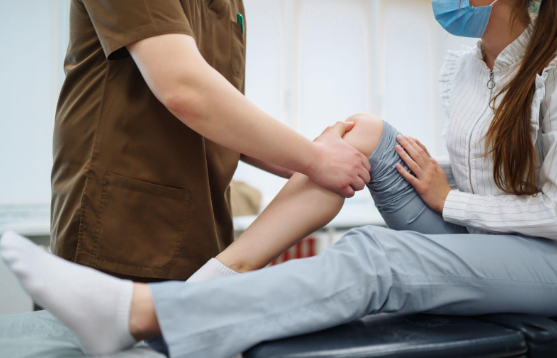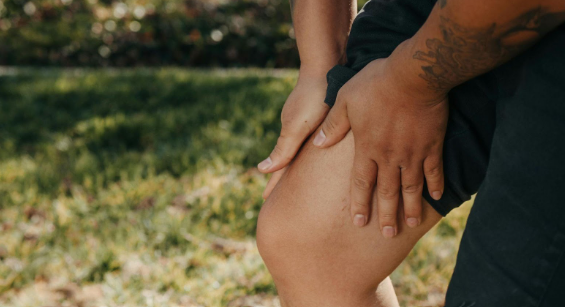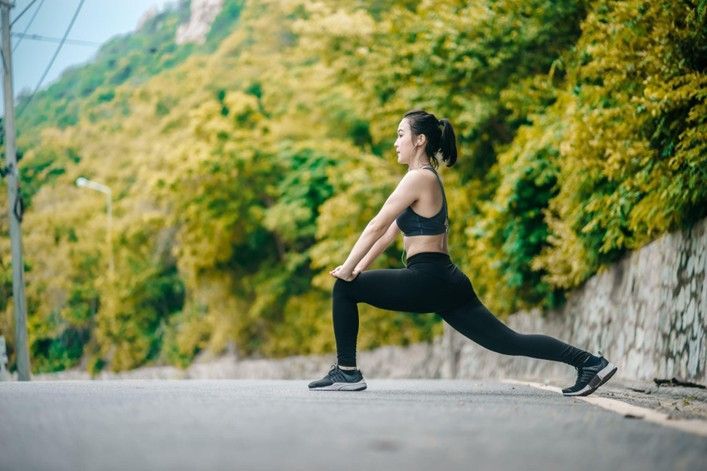Outdoor Activities Without the Ache: Joint-Friendly Exercises for Spring

Spring is the perfect time to get outside, soak up the sunshine, and enjoy the fresh air. But for those dealing with joint pain, the idea of outdoor exercise can seem daunting. Whether it’s arthritis, an old injury, or just general stiffness, discomfort shouldn’t keep you from being active.
The good news? There are plenty of joint-friendly exercises that let you enjoy the beauty of spring without the ache.
The Benefits of Low-Impact Outdoor Exercise
Engaging in low-impact activities is one of the best ways to stay active while protecting your joints. Unlike high-impact exercises that put stress on your knees, hips, and shoulders, low-impact movements allow you to build strength, improve flexibility, and boost cardiovascular health without unnecessary strain.
Exercising outdoors adds even more benefits. Natural sunlight provides a healthy dose of vitamin D, which supports bone health, while fresh air can enhance mood and energy levels. Plus, moving outside offers a change of scenery that makes workouts feel less like a chore and more like an enjoyable part of your day.
The Ultimate Joint-Friendly Activity
Walking is one of the easiest and most accessible exercises for people of all fitness levels. It’s a natural movement that helps lubricate the joints, strengthen muscles, and improve circulation—all without putting excessive pressure on your body.
To make walking even more joint-friendly, consider choosing soft surfaces like grass, dirt trails, or a rubberized track instead of pavement. Walking poles can also provide extra support by distributing weight more evenly and reducing strain on your lower body.
If you want to take your walk to the next level, try adding gentle intervals. Walking at a slightly faster pace for short bursts can help boost your endurance without increasing the impact on your joints.
A Smooth Ride for Joint Health
Cycling is another excellent way to enjoy the outdoors while being kind to your joints. Unlike running, which places repeated stress on your knees and ankles, biking allows for smooth, controlled movements that strengthen your leg muscles without pounding your joints.
For the best joint-friendly experience, consider riding a bike with good suspension and proper seat positioning for proper comfort. A well-adjusted seat helps maintain proper knee alignment and prevents unnecessary strain.
If you’re new to cycling or have balance concerns, try a recumbent bike, which offers extra back support and reduces pressure on your hips and knees. Whether you're riding through a park, along a scenic trail, or around your neighborhood, cycling provides a great mix of exercise and exploration.
A Weightless Workout
When it comes to protecting your joints while getting a full-body workout, nothing beats exercising in water. Swimming provides a near-weightless environment, reducing stress on the joints while allowing for smooth, fluid movements. The resistance of the water also helps strengthen muscles without the need for heavy weights.
If traditional swimming strokes feel too challenging, consider water aerobics or simply walking in the pool. Water walking engages the muscles while supporting your body weight, making it a great choice for those with
arthritis or mobility concerns. Many community pools offer water exercise classes designed specifically for joint health, making it easy to get started.
Gentle Movements for Flexibility and Strength
For those who want to enhance flexibility, balance, and strength without stressing their joints, yoga and tai chi are excellent choices. Both practices focus on slow, controlled movements that promote joint mobility and overall well-being.
Not all yoga and tai chi styles are the same, so it’s important to select one that prioritizes gentle movement. Hatha yoga and restorative yoga are ideal for beginners and those with joint pain, as they emphasize stretching and deep breathing rather than intense poses. Tai chi, often referred to as “meditation in motion,” involves slow, flowing movements that improve balance and coordination while being easy on the joints.
Practicing yoga or tai chi in a park or garden can enhance the experience by allowing you to connect with nature while moving your body in a soothing, controlled way.
Upper Body Strength Without the Strain
For those who love being on the water, kayaking is a fantastic way to build upper body strength without putting excessive strain on the joints. The fluid paddling motion engages the arms, shoulders, and core while allowing you to explore lakes, rivers, or coastal areas.
To keep kayaking joint-friendly, focus on using smooth, controlled strokes and try not to grip the paddle too tightly. Choosing a kayak with good back support can also help maintain proper posture and reduce strain on your spine and shoulders.
Kayaking offers a unique blend of exercise and relaxation, making it a perfect springtime activity for those who enjoy the peacefulness of being on the water.
Keeping Joints Happy with Stretching and Mobility Exercises
No matter what outdoor activity you choose, incorporating gentle stretching and mobility exercises can help keep your joints feeling their best. Stretching before and after exercise helps maintain flexibility, reduces stiffness, and minimizes the risk of injury.
Dynamic stretches, like leg swings or arm circles, are great for warming up before activity, while static stretches, such as seated hamstring stretches or shoulder stretches, can help cool down the muscles afterward. Taking a few minutes to stretch in a quiet outdoor space, whether it’s a local park or your own backyard, can also provide a mental reset, helping you feel more relaxed and refreshed.
Adjusting Activities for Comfort
One of the most important aspects of staying active with joint pain is listening to your body. While movement is beneficial for joint health, pushing through pain can do more harm than good. If an activity causes you discomfort, try modifying it or switching to something else that feels better.
Hydration, proper footwear, and good posture all play big parts in keeping your joints healthy. Drinking enough water helps maintain joint lubrication, while supportive shoes with cushioned soles reduce impact. Maintaining good posture, whether walking, cycling, or practicing yoga, can make sure that your body moves efficiently and minimizes strain.
At
Pain Treatment Centers of America, we’re ready to provide relief so that you can enjoy outdoor activities as much as you like. If you’re ready to make the most out of spring,
contact us today!













